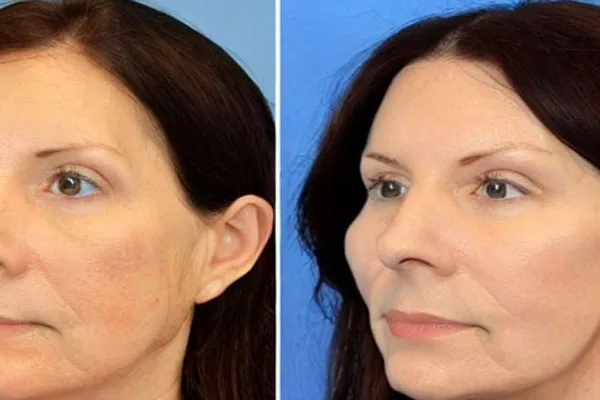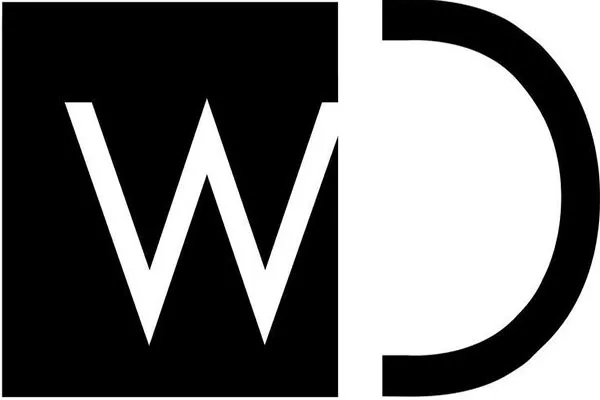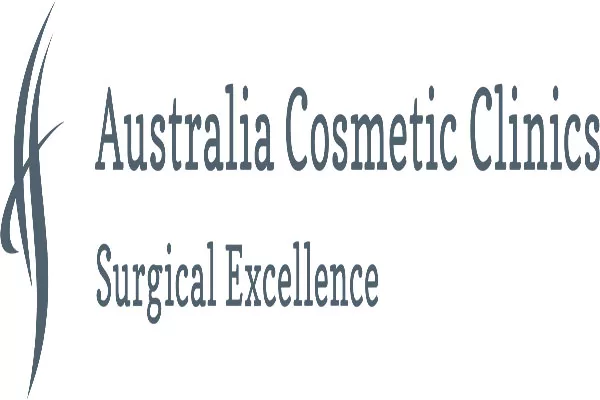For those who are seeking a more youthful and refreshed appearance, a lower face and neck lift may be a viable option. This type of facial surgery targets the lower third of the face and the neck area, improving laxity and sagging skin.
Here are some important things to know about this procedure:
- Advantages of a lower face and neck lift
- Who is a good candidate for this surgery
- Preparing for surgery
- Surgical procedure details
- Recovery process
- Risks and complications
- Expected results
- Cost of the procedure
- Finding a qualified surgeon
- Frequently asked questions
Advantages of a lower face and neck lift
A lower face and neck lift can provide patients with numerous benefits, such as:
- Youthful appearance: With age, our skin starts losing elasticity and sags. This leads to wrinkles, fine lines, and sagging skin. A lower face and neck lift can rejuvenate your appearance by lifting and tightening the skin, softening wrinkles, and enhancing facial contours.
- Improved self-confidence: Many people feel self-conscious about their appearance as they age. A lower face and neck lift can help restore confidence by making patients look and feel younger.
- Long-lasting results: The results of a lower face and neck lift can last for several years, making it a long-term investment in your appearance.
- Customizable procedure: Every patient is different, and a skilled surgeon will customize the surgery to suit your specific needs and preferences. This way, you can achieve the most natural-looking, effective results.
Who is a good candidate for this surgery
Not everyone is a good candidate for a lower face and neck lift. The following factors may make you a good candidate for this type of surgery:
- Age: Typically, this procedure is recommended for individuals over 40 who have noticeable signs of aging in the lower face and neck area.
- Good health: You should be in good overall health and free of any conditions that could complicate the surgery or the healing process.
- Realistic expectations: You should have realistic expectations about the results of the surgery. While it can improve your appearance, it won’t make you look like someone else entirely.
- Non-smoker: Smoking can increase the risk of complications during and after surgery, so it’s important to quit smoking before undergoing this procedure.
- Loose skin in the lower face and neck: If you have sagging skin in the lower face and neck area, you may be a good candidate for this surgery.
- Strong bone structure: Good bone structure can help provide support for the skin and improve overall results.
- No medical conditions or medications that could interfere with healing: Certain medical conditions or medications can interfere with the healing process, so it’s important to disclose your complete medical history to your surgeon.
Preparing for surgery
Once you have decided to undergo a lower face and neck lift, your surgeon will give you specific instructions about how to prepare for the procedure. Here are some general tips to keep in mind:
- Stop smoking: Smoking can increase the risk of complications during surgery and slow down the healing process. It’s essential to stop smoking at least two weeks before surgery and not to start up again for at least two weeks after surgery.
- Avoid certain medications: Your surgeon will instruct you to stop taking any medications or supplements that could increase your risk of bleeding, such as aspirin, ibuprofen, and blood-thinning medications.
- Arrange for transportation: You will not be able to drive yourself home after surgery due to the effects of anesthesia, so it’s important to have someone available to take you home.
- Arrange for postoperative care: You will need to have someone help you with basic tasks, such as preparing meals and taking care of pets, during the first few days of recovery.
- Wear comfortable clothing: You should wear loose, comfortable clothing that is easy to put on and take off.
- Follow your surgeon’s instructions: Your surgeon will give you detailed instructions on what you should do before surgery to ensure the best possible outcome. It’s essential to follow these instructions carefully to reduce your risk of complications.
Surgical procedure details
A lower face and neck lift is typically performed as an outpatient procedure under general anesthesia. Here are the general steps involved in the surgery:
- Administering general anesthesia: You will be put to sleep so that you won’t feel any pain during the surgery.
- Incisions: Your surgeon will make incisions around your ears and under your chin. These incisions will be hidden as much as possible to minimize visible scarring.
- Lifting and tightening: Your surgeon will lift and tighten the skin and underlying muscles to improve elasticity and create a more youthful appearance. Excess fat and skin may be removed to further enhance the results.
- Closing the incisions: The incisions will be closed with sutures or staples, and drainage tubes may be inserted to help remove excess fluid from the area.
- Bandaging: The area will be bandaged and wrapped to help reduce swelling and promote healing.
The surgery typically takes about two to four hours, depending on the extent of the work needed. Your surgeon will give you specific instructions on how to care for the incisions and what to expect during the recovery process.
Recovery process
The recovery process for a lower face and neck lift can vary depending on the individual, but here are some general guidelines:
- Swelling and bruising: You can expect some swelling and bruising in the first week or two after surgery. This is normal and will gradually subside.
- Discomfort: You may experience some pain and discomfort, but your surgeon can prescribe medication to ease your symptoms.
- Rest and relaxation: You will need to rest and avoid strenuous activities, such as exercise, for several weeks after surgery. You should be able to resume normal activities, including work, within two weeks.
- Follow-up appointments: Your surgeon will schedule follow-up appointments to check your progress and remove any sutures or staples.
- Long-term care: You should avoid prolonged sun exposure and wear sunscreen to protect the incisions from discoloration. It’s also important to maintain a healthy lifestyle, including a good diet and regular exercise, to help maintain the results of the surgery.
- Timeframe for results: You will begin to see a noticeable improvement in your appearance within a few weeks, but it can take up to several months for the full results to become visible.
Risks and complications
All surgeries come with some potential risks and complications, and a lower face and neck lift is no exception. Here are some potential risks to be aware of:
- Infection: Any surgical procedure carries a risk of infection, which can cause redness, swelling, and fever.
- Bleeding: Excessive bleeding during or after surgery is possible and may require a blood transfusion or other treatment.
- Scarring: While your surgeon will make every effort to minimize scarring, there is always a risk of visible scarring.
- Nerve damage: The surgery can potentially damage facial nerves, which can cause temporary or permanent numbness, weakness, or paralysis.
- Hair loss: Some patients may experience temporary or permanent hair loss around the incision sites.
- Fluid accumulation: Fluid can build up under the skin, causing swelling and discomfort.
- Anesthesia complications: General anesthesia can cause complications in some patients, such as an allergic reaction or breathing problems.
It’s important to discuss these risks with your surgeon and make an informed decision about whether this surgery is right for you.
Expected results
A lower face and neck lift can provide patients with significant improvements in their appearance. While results can vary, here are some typical outcomes that patients can expect:
- A more youthful appearance: The surgery can improve the appearance of sagging skin, wrinkles, and fine lines, giving patients a more youthful and refreshed look.
- Enhanced facial contours: By lifting and tightening the skin, patients can achieve more defined facial contours, such as a sharper jawline and smoother neck.
- Increased self-confidence: Many patients report feeling more confident and satisfied with their appearance after undergoing a lower face and neck lift.
- Long-lasting results: While the natural aging process will continue, the results of a lower face and neck lift can last for several years with proper care and maintenance.
It’s important to have realistic expectations about the results of this surgery and to discuss your goals with your surgeon. A skilled surgeon will work with you to achieve natural-looking, effective results that enhance your appearance and boost your confidence.
Cost of the procedure
The cost of a lower face and neck lift can vary depending on several factors, such as the extent of the work needed, the surgeon’s experience, and the location of the practice. Here are some typical costs to keep in mind:
- Surgeon’s fees: The surgeon’s fees typically range from $5,000 to $10,000 or more.
- Anesthesia and facility fees: These fees can range from $1,000 to $3,000 or more, depending on the facility and the type of anesthesia used.
- Follow-up appointments and postoperative care: These costs can vary depending on the surgeon’s policy and the amount of care needed after surgery.
- Additional costs: Depending on your specific needs, you may need to pay for additional procedures, such as liposuction, that can add to the overall cost.
It’s important to discuss the cost of the procedure with your surgeon and to understand exactly what is included in the fee. In some cases, financing options may be available to help make the surgery more affordable.
Finding a qualified surgeon
Finding a qualified surgeon is crucial to the success of your lower face and neck lift procedure. Here are some tips for finding a skilled and experienced surgeon:
- Research online: Look for surgeons who specialize in facial plastic surgery and have extensive experience performing lower face and neck lifts.
- Ask for referrals: Ask friends, family members, or your regular physician for recommendations for a reputable surgeon.
- Read reviews: Read reviews from previous patients to learn about their experiences and results.
- Check credentials: Make sure the surgeon is certified by the American Board of Plastic Surgery and has a clean record with the state medical board.
- Schedule a consultation: Meet with the surgeon to discuss your goals and ask questions about the procedure. Make sure you feel comfortable with the surgeon and that they communicate clearly and honestly.
By taking the time to find a qualified surgeon, you can feel confident that you will achieve the best possible results from your lower face and neck lift procedure.
References:
- American Board of Plastic Surgery. (2021). Is a Facelift Right for Me? Retrieved from https://www.abplasticsurgery.org/patient-and-consumer-information/is-a-facelift-right-for-me/
- American Society of Plastic Surgeons. (2021). Face Procedures. Retrieved from https://www.plasticsurgery.org/cosmetic-procedures/face-procedures/lower-face-lift
- Langsdon, P. R. (2018). Lower Face and Neck Lift. Facial Plastic Surgery Clinics of North America, 26(1), 1–9. doi: 10.1016/j.fsc.2017.09.001
- Mayo Clinic. (2021). Face-lift. Retrieved from https://www.mayoclinic.org/tests-procedures/face-lift/about/pac-20394059
- The Aesthetic Society. (2021). What is a Facelift? Retrieved from https://www.smartbeautyguide.com/procedures/head-face/facelift/.







